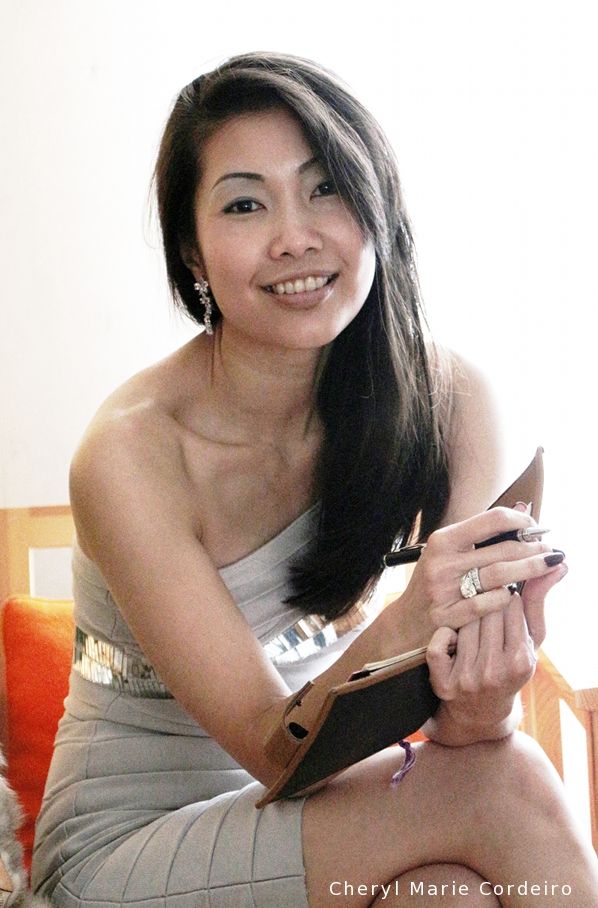This article contains reflections at the intersection of several disciplines under Management & Organization that include leadership, organizational evolution, governance systems and sustainability. The background literature broadly follows from studies in the fields of Swedish management / leadership [1, 2], human nature [3, 6] and organizational evolution [4, 5]. An unlikely comparison of societal organizational characteristics is drawn between these two highly different social systems, the Hadza and the Swedes. The ideas are in contemplation towards a search for a congruent management of social structures that bridge the levels of socio-economic and political realities.
Continue reading ”Leadership, social governance and sustainability: Sweden and the Hadza of Tanzania, an unlikely comparison”
Sustainable – a word with many meanings
Stockholm Strömmen.
Stockholm is one of Europe’s five fastest growing cities and is the first European Green Capital 2010.
Text & Photo © JE Nilsson, CM Cordeiro 2014
Many years ago I watched a man restore an antique wooden door. He had first carefully sanded it down to its original paint layer, til it was soft enough to run your hand over it, til you could feel the warmth of the wood at its core. To get the door to match the rest of the interior of the house, he then began by adding a thin layer of linseed oil. Each brush stroke was carefully calculated in pressure, length and weight.
I soon realized that he carried with him a tacit knowledge that not many others had. But more than tacit knowledge was also a genuine interest in what he was doing. He breathed life back into an antique door that most others would have thrown away and replaced with a brand new one from Bauhaus. He worked with undivided attention and as I watched, I pondered who else would ever come to appreciate the efforts? What came through clearly was that the care he put into that antique door was also a personality trait that you could see run through almost all other things he did.
I realized that this door might well outlive us both, at the cost of some linseed oil. Continue reading ”Sustainable – a word with many meanings”
On a tangent note to the evidence of cosmic inflation: Transcending the Cartesian mind body divide
New evidence ”brings ’Theory of Everything’ a bit closer to reality” (Wall 2014)
The bottom part of this illustration shows the scale of the universe versus time. Specific events are shown such as the formation of neutral Hydrogen at 380 000 years after the big bang. Prior to this time, the constant interaction between matter (electrons) and light (photons) made the universe opaque. After this time, the photons we now call the CMB started streaming freely.
Credit: BICEP2 Collaboration.
Helena Granström makes some interesting observations about what science, even the social sciences, have given us over these centuries – a conviction of the functionality of how things are (everything by science can / must be physically empirically quantifiable) but a loss of a true understanding of the intrinsicality of the being of things (here lies the realm of the less than 4% knowledge of the quantum world that even as I write this, a few weeks ago, sat a very bright PhD student in the room and asked, “Is quantum physics really a field of study? Who does quantum physics? What good does it have for us?” To which I was at a complete loss of words, except to reply, “Yes, it’s a real field of study. I think the CERN might be very upset to hear what you just said.”)
Continue reading ”On a tangent note to the evidence of cosmic inflation: Transcending the Cartesian mind body divide”
Complexity theory and autopoiesis. Contemplations on the New Year’s eve 2014
Outlining my New Year’s resolutions of sorts.
Text & Photo © JE Nilsson, CM Cordeiro 2013
Through the year, I’ve looked to study and understand the complexity of social organizations and the concept of culture from a systems evolutionary perspective, which is something other than the dichotomous, dimensional construct that had been grounded in academic literature since the early 1960s. The basic assumption comes from the context of nonlinear dynamics and complexity theory, where as noted by Engels (1982), that the more complex generic type includes but cannot be reduced to an aggregation of the simpler types.
My interest in nonlinear dynamics and the theory of complexity has led me to the writings of authors with a similar perspective on the workings of life, where the common thread behind their argument is the philosophy that life’s material (physical), biological, cognitive and social dimensions all belong to a coherent, integrated system. To this extent, the key challenge for the future in research, and the agenda for the upcoming scientific paradigm is to put forth a conceptual framework that acknowledges this integrated system of phenomena.
The value of a systemic and integrated perspective on phenomena would be its contribution towards understanding the building of an autopoietic system. The term refers to a system capable of reproducing and maintaining itself. The term was introduced in 1972 by Chilean biologists Humberto Maturana and Francisco Varela to define the self-maintaining chemistry of living cells. Since then the concept has been also applied to the fields of systems theory and sociology as a conceptual variation of the thermodynamic concept of self-organization. Continue reading ”Complexity theory and autopoiesis. Contemplations on the New Year’s eve 2014”
Multidisciplinary, Interdisciplinary, Transdisciplinary
The past decade has seen an increasing call for the field of International Business studies (IB) to embrace interdisciplinarity, the interest moving from cross-disciplinary and multidisciplinary in nature to one that encouraged the blurring of boundaries and the integration of disciplines to render new insights.
In a recent roundtable session, the terms multidisciplinary (MD), interdisciplinary (ID) and trans-disciplinary (TD) were discussed in relation to the field of IB. As could be expected we all entered the debate with our own tacit knowledge of the field, to be put on the table and to disentangle our various definitions.
The task proved more interesting when one paper on the definitions of these words was placed on the table, that now set a reference point. And then more papers were presented that set a number of different reference points.
We did what we do best in such situations and that was to survey the ground from a top-down perspective, and then break for coffee. Continue reading ”Multidisciplinary, Interdisciplinary, Transdisciplinary”
With ears to the ground
The fika break is a Swedish near holy opportunity to stay tuned in on what is really going on.
Text & Photo © CM Cordeiro 2013
It was 2004.
We were sitting in the canteen of the main administrative building. The canteen was located on the higher floors, with high ceilings and large windows that overlooked three other buildings with chimneys billowing smoke. Continue reading ”With ears to the ground”
When in doubt, begin with a custard then go left.
The advantage of being in sniper position and camouflaging is the ability to produce blueberry muffins as one of three food wishes, from limited quantities of frozen blueberries.
Text & Photo © JE Nilsson, CM Cordeiro 2013
We were standing loosely, in a group, outside the main office buildings, in idle summer chatter which mostly covered what transpired during the most recent seminar that some of us had just stepped out of. It was lunch time and those present were waiting for a few more colleagues that formed the daily lunchtåg or lunch train, before proceeding to said destination for lunch. Except in Swedish group organization tradition, those present are never really sure who is going to turn up for the lunch train, and there is most often no said destination for lunch. Decisions are made in a much more mysterious manner – you just needed ’to know’ these kinds of things. This happens too in more formal meetings, where issues other than what is on the agenda are discussed and there seems to be no general agreement on anything at any one point in time. In such meetings, it is also not unusual that the only point in time when people start to take notes would be at the end of the meeting when they are deciding when to meet next. And meetings are planned very much ahead of time, so you could decide on two future meetings already now.
Continue reading ”When in doubt, begin with a custard then go left.”
Multiculturalism, the Liberals’ Dilemma and integrated aperspectivism – when not all perspectives are equal
Cheryl Cordeiro and Alvin Tan with his art, at Phunk Studio’s Empire of Dreams exhibition, January 2013, Singapore. Phunk Studio is a gallery space that illustrates an integral perspective expressed through art.
Text and Photo © JE Nilsson, CM Cordeiro 2013
I’ve been reading Doriane L. Coleman (1996), Jürgen Habermas (1976) and Ken Wilber (2000), where I’m finding a lot of humour in Wilber’s writings in how he incorporates Habermas into his own philosophical reasoning, specifically talking of how some disciplines argue themselves lost into aperspectival space usually at higher levels of development within the individual, the organizational, national and transnational realms. More thoughtful and filled with much less humour is the article by Coleman on “cultural defense” and “the Liberals’ Dilemma”.
This article is an exploration in thought on the dialectic of progress, the nature of multiculturalism (and its consequences when used in court as a “cultural defense”) and aperspectival fallacy. Continue reading ”Multiculturalism, the Liberals’ Dilemma and integrated aperspectivism – when not all perspectives are equal”
Conversation about status symbols over cinnamon infused apple crumble

A mixture of sweet and sour apples render
a nice balance to the flavour of this cinnamon infused creation.
Text & Photo © JE Nilsson, CM Cordeiro 2013
It was over a delicate apple crumble dessert served with whipped cream and cinnamon, in the plush setting of the Bar and Billiard Room at Raffles Hotel in Singapore, that the importance of the use of status symbols in Asia was explained to me as a series of unhappy events that a Nordic company experienced in its early years in Singapore, during the late 1990s.
Different views of what defines success
Asia and Scandinavia have different views of what defines success. They also have different ways of showing social / organizational affluence, a lack of understanding on either side on the effective use of such status symbols could well lead to an awkward situation of miscommunication, some small, others needing nothing less than a crisis management strategy.
Some ten years ago, part of how Nordic organizations expanded their operations was to send a core-team of top Scandinavian managers to oversee initial functions in Asia. Chances are, this modus operandi has not changed much since then. Continue reading ”Conversation about status symbols over cinnamon infused apple crumble”
Organization identity and the dialogic process of recreating corporate values
In SvD 19 April 2013, Näringsliv.
Conflict and powerplay between Volvo Cars and Geely as presented in the press.
Text & Photo © CM Cordeiro 2013
’Five conflicts stirring Volvo in China’
Just recently this headline in large fonts headed the front page of the business section of one of Sweden’s most respected morning news papers. It was obvious that something had changed.
As one of many who keep a keen interest in the economic and geographic spatial reconfigurations of the global automobile industry, I did not expect a smooth process of acquisition of Volvo Cars by Geely from 2010 onwards.
Research literature charts a five times more likely narrative of a failed attempt at mergers and acquisitions than one of success. In the case of the Swedish then American owned Volvo Cars being acquired by Chinese Geely, language, culture, values and outlook on life per se are but the tip of the ice-berg to the multiple foundational layers of differences that need to be disentangled in this corporate marriage. Continue reading ”Organization identity and the dialogic process of recreating corporate values”







